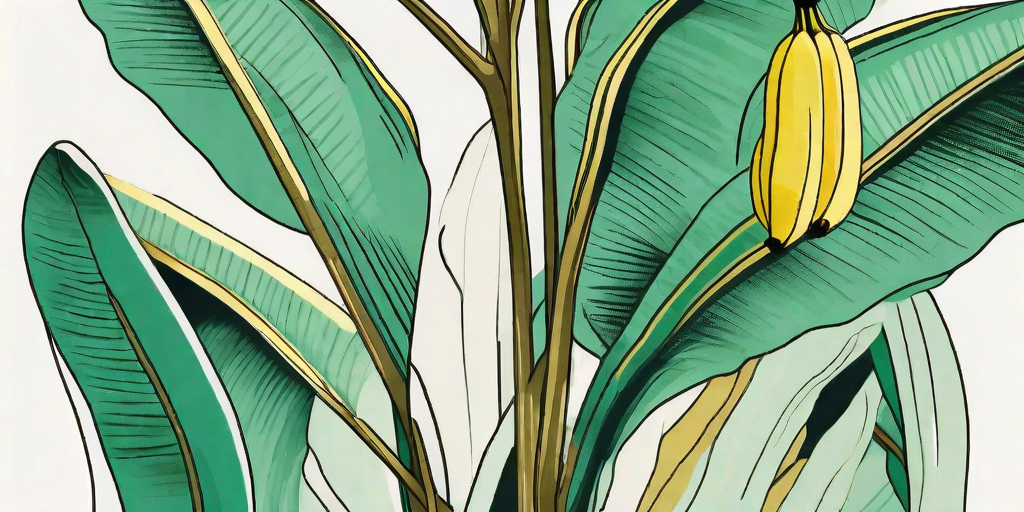
Bananas, the yellow-skinned fruit that has been the butt of many a slapstick comedy routine, are a staple in many households around the world. But have you ever wondered about the journey these curvy fruits take from being a green, unripe fruit hanging on a tree to the ripe, golden delicacy we find in our fruit bowls? Well, buckle up, because we're about to embark on a rip-roaring ride through the world of banana ripening.
The Life of a Banana: A Tale of Transformation
Our story begins in the tropical regions of the world, where banana plants (which, fun fact, are technically herbs) thrive. The bananas we know and love start their life as small, green fruits, tightly packed together in large bunches on the banana plant.
At this stage, the bananas are far from the sweet, creamy fruits we're familiar with. They're hard, starchy, and not particularly pleasant to eat. But fear not, for the magic of ripening is about to begin.
The Ripening Process: A Symphony of Science
Once the bananas have reached their full size, the ripening process begins. This process is triggered by the plant's production of a hormone called ethylene. Ethylene is a gas that acts as a sort of biological alarm clock, signaling to the banana that it's time to start ripening.
As the banana begins to ripen, it undergoes a series of changes. The green color fades, replaced by a vibrant yellow. The hard, starchy flesh softens and sweetens, transforming into the delicious fruit we all know and love. This is all thanks to the action of enzymes, which break down the starches in the banana into sugars.
Does Ripening Happen on the Tree?
Now, here's where things get interesting. You might think that bananas ripen on the tree, slowly turning from green to yellow as they hang in the tropical sun. But that's not actually the case. In fact, bananas are usually harvested while they're still green, and then ripened off the tree.
This is because bananas ripen very quickly once they start, and if left on the tree, they would become overripe and start to rot before they could be transported to markets around the world. So, the bananas are picked while they're still green, and then exposed to ethylene gas in controlled environments to trigger the ripening process.
The Art of Banana Ripening: A How-To Guide
Now that we've covered the science of banana ripening, let's get practical. How can you ripen bananas at home, and how can you slow down the ripening process if your bananas are getting too ripe too quickly?
Ripening Bananas at Home
If you've bought a bunch of green bananas and you're eager to ripen them up, there are a few things you can do. The simplest method is to just leave them out at room temperature. The bananas will naturally produce ethylene and ripen over time.
But if you want to speed up the process, you can put the bananas in a paper bag. The bag will trap the ethylene gas and create a mini ripening chamber, accelerating the ripening process. For an even faster result, add an apple or a tomato to the bag. These fruits also produce ethylene and will boost the ripening process.
Slowing Down the Ripening Process
On the other hand, if your bananas are ripening too quickly, there are a few tricks you can use to slow things down. One method is to separate the bananas. Bananas ripen faster in a bunch, so separating them can slow the process.
Another trick is to put the bananas in the fridge. The cold temperature will slow down the ripening process. The skins may turn brown, but don't worry - the fruit inside will stay fresh and delicious.
FAQs About Banana Ripening
Why do bananas ripen faster in a bunch?
Bananas ripen faster in a bunch because they produce ethylene gas, which triggers the ripening process. When bananas are in a bunch, the ethylene gas is concentrated, which accelerates the ripening process.
Can I eat a green banana?
While green bananas are not as sweet and soft as ripe bananas, they are perfectly safe to eat. In fact, green bananas are a good source of resistant starch, which can be beneficial for gut health.
Why do bananas turn brown?
Bananas turn brown as they ripen due to the action of enzymes, which break down the green pigments in the banana skin and replace them with brown pigments. This is a natural part of the ripening process and is not a sign that the banana is spoiled.
Conclusion
So there you have it - the surprising truth about banana ripening. From their humble beginnings as small, green fruits on the tree to their transformation into the golden, delicious fruits we love, bananas go through a fascinating journey. So next time you peel a banana, take a moment to appreciate the science and art of banana ripening.
Now, if you'll excuse me, all this talk about bananas has made me hungry. I think it's time for a banana break!











